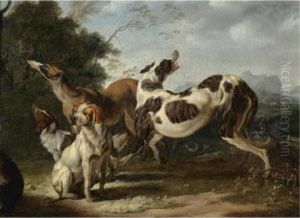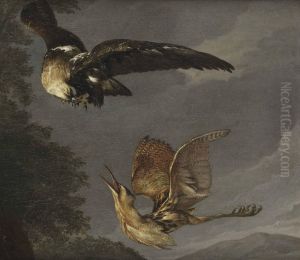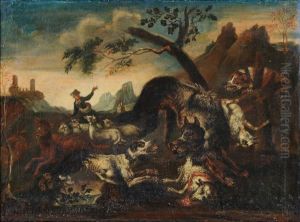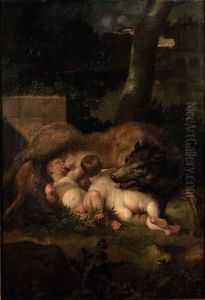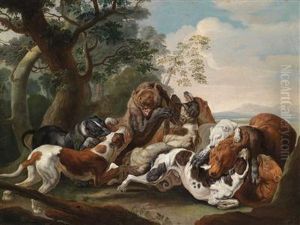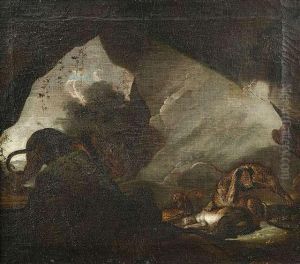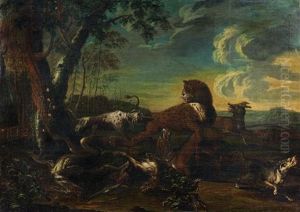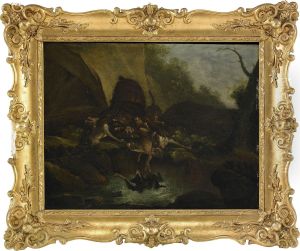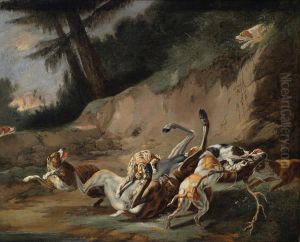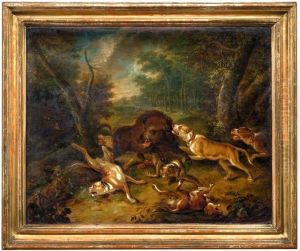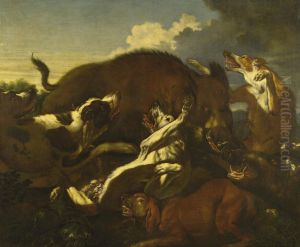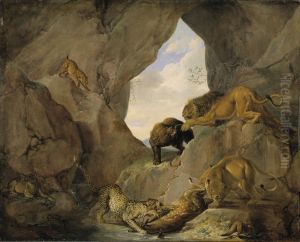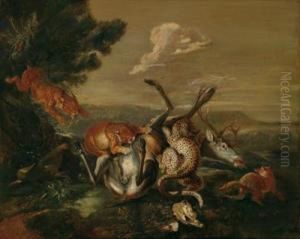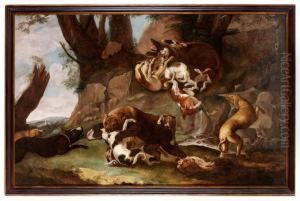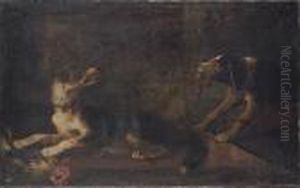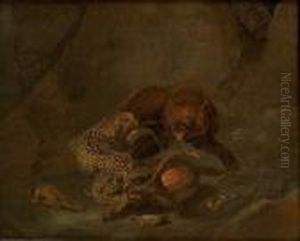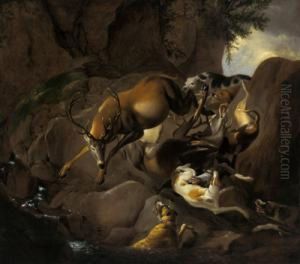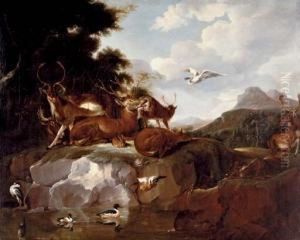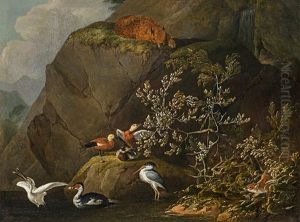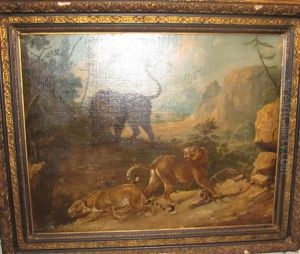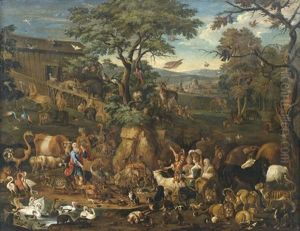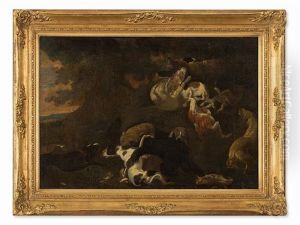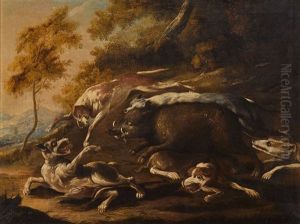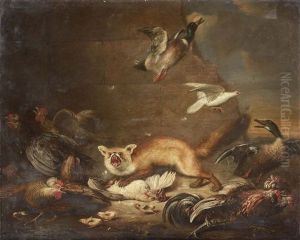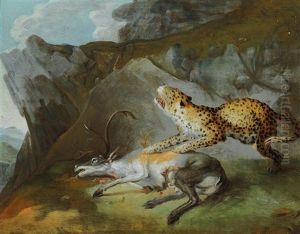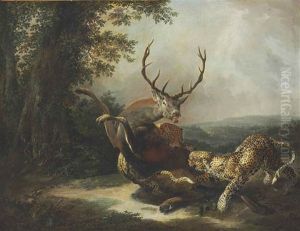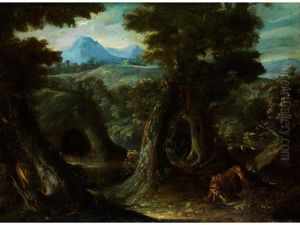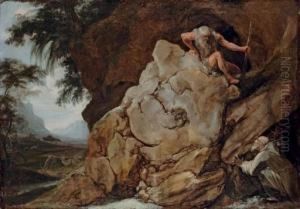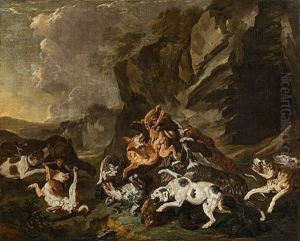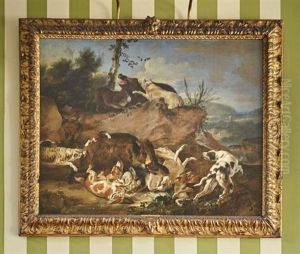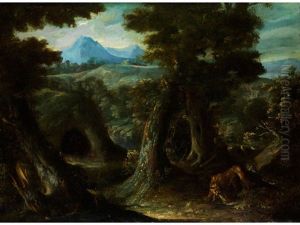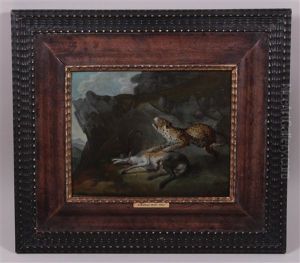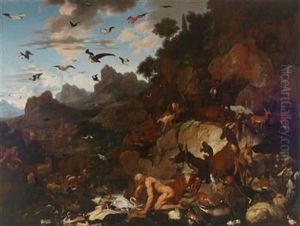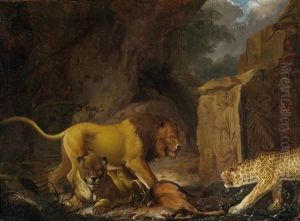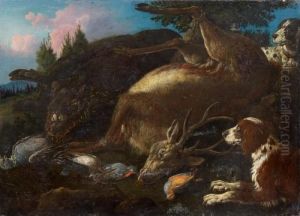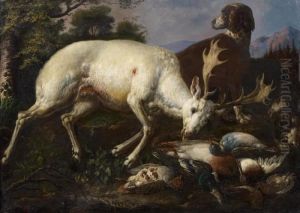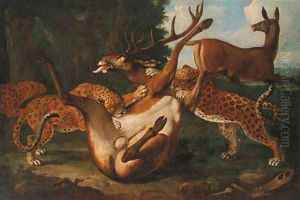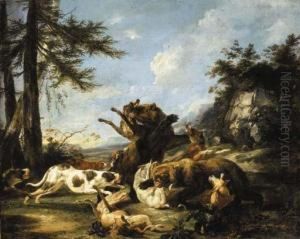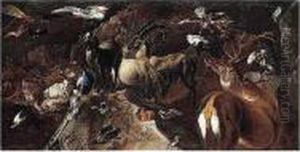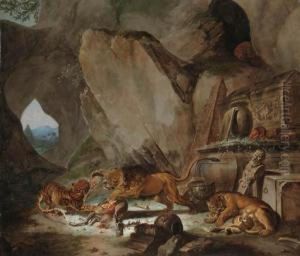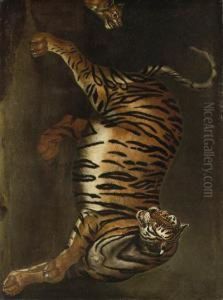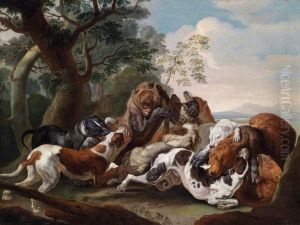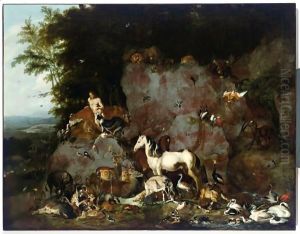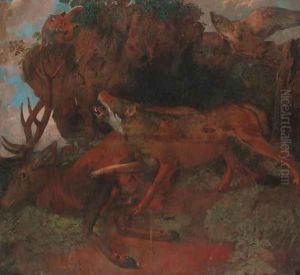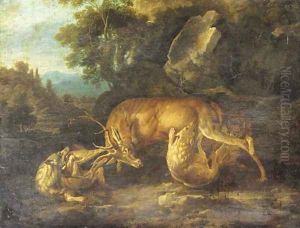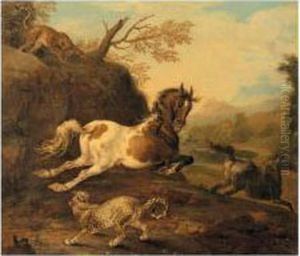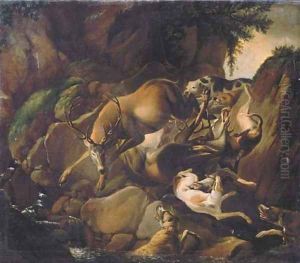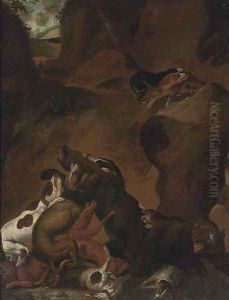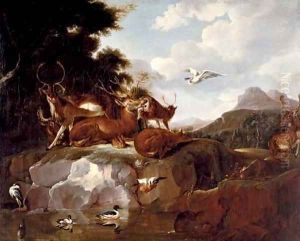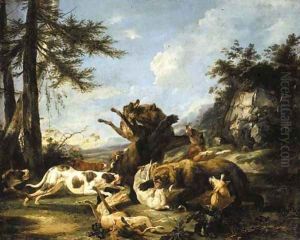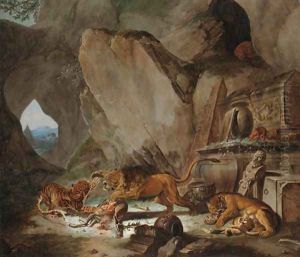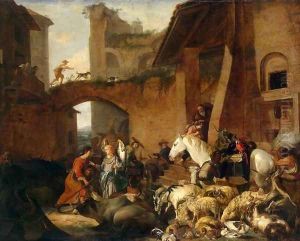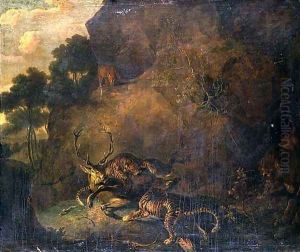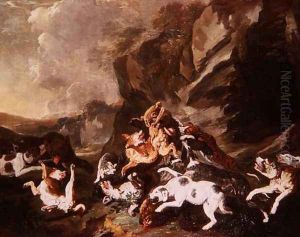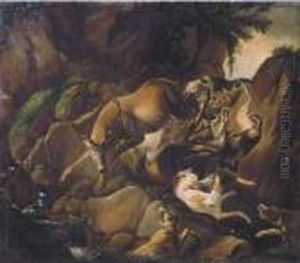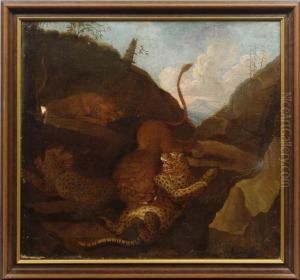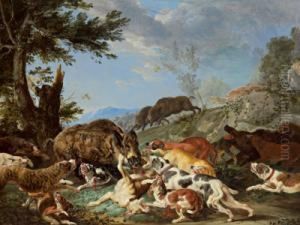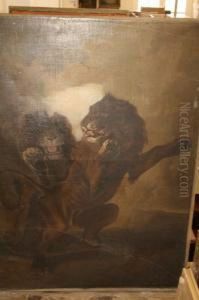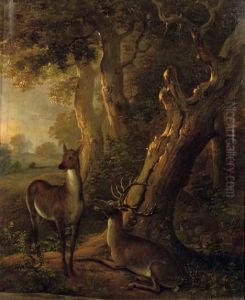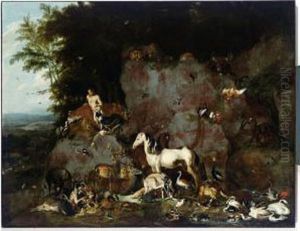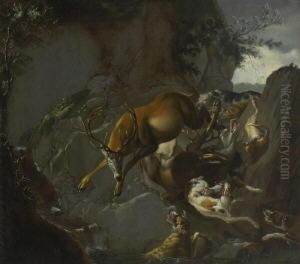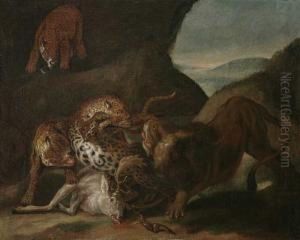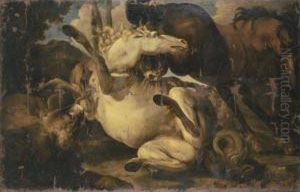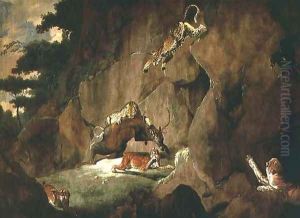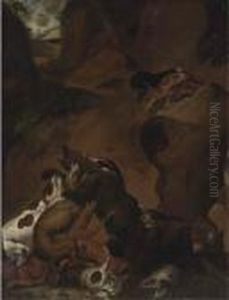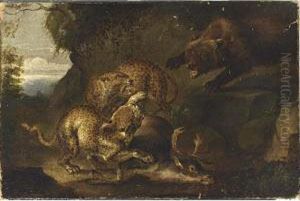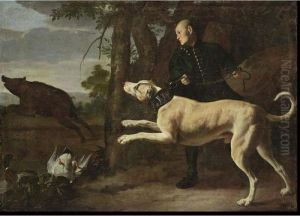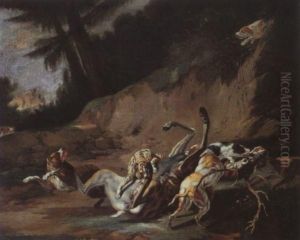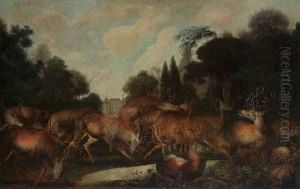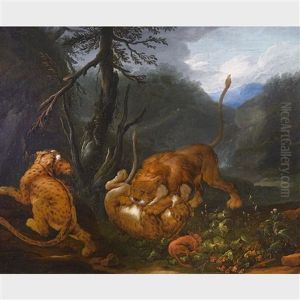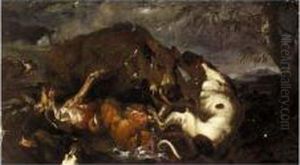Carl Borromaus Andreas Ruthart Paintings
Carl Borromaus Andreas Ruthart, also known as Karl Ruthart or Carolus Bartholomaeus Ruthart, was a Baroque painter born in 1630 in Gdansk (then part of the Polish-Lithuanian Commonwealth, now Poland). He is renowned for his detailed and lifelike animal paintings as well as his depictions of hunting scenes and still lifes. Ruthart's work reflects a deep observation of nature and a fascination with the animal kingdom, which was a prevalent theme in the art of the Baroque period.
Ruthart received his initial training in his hometown of Gdansk and further developed his artistic skills in Italy, where he was influenced by the dynamic and dramatic style that characterized Baroque art. He spent a significant period in Rome, which was a center for artistic training and innovation during the 17th century. There, he studied the works of earlier masters and was particularly influenced by the animalier paintings of the Flemish artist Frans Snyders, known for his dynamic compositions and realistic portrayal of animals.
After his Italian sojourn, Ruthart returned to Northern Europe and worked in various cities, including Vienna and Frankfurt. He became court painter to the Archbishop of Mainz, which provided him with a steady stream of commissions and an opportunity to work on large-scale paintings that often adorned palatial and ecclesiastical settings.
Throughout his career, Ruthart developed a distinctive style that blended his keen observation of animals with a robust Baroque sensibility. His paintings often featured dramatic contrasts of light and shadow, a technique known as chiaroscuro, which added a sense of depth and vitality to his subjects. Ruthart's ability to capture the texture of fur and the muscularity of animals in motion made his paintings highly sought after by patrons who appreciated the naturalistic and vigorous qualities of his work.
Carl Borromaus Andreas Ruthart continued to paint until his death in 1703. Today, his works are held in various collections and museums, and they continue to be studied for their contribution to Baroque art, particularly in the genre of animal painting. His legacy is that of an artist who combined technical skill with an intimate understanding of the natural world, producing works that are both dynamic and detailed.
